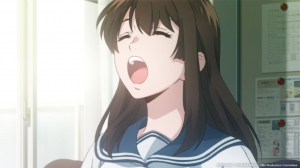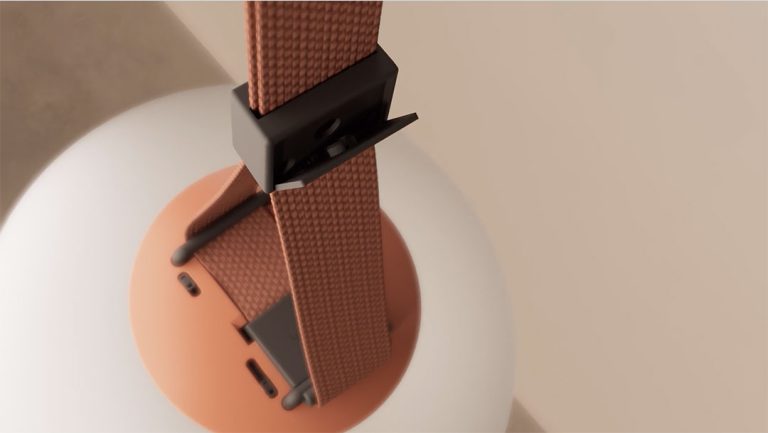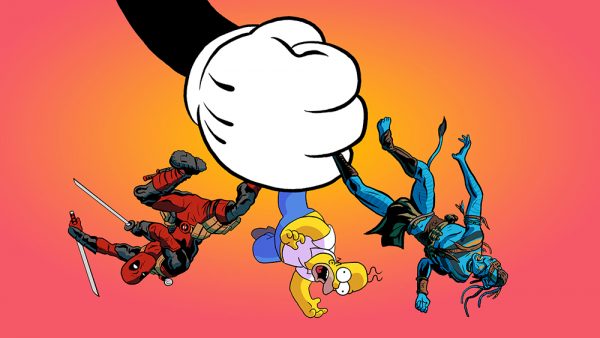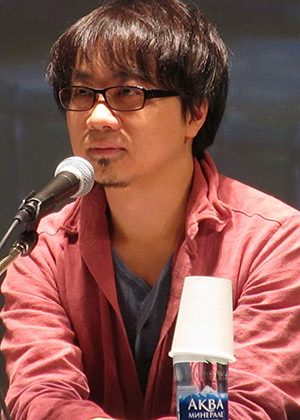“There are anime that have musical bits and songs, but this is so unique in the way the songs are used because it’s like Shion’s own language,” says Palencia. “It’s how she gets across what she wants to truly say and convey and how she helps other people understand their own emotions. I approached it the same way that I would any song adaptation, but it did feel like it had more weight, where all of the lyrics mattered so much more than I’m used to because it really did serve to move the story, which doesn’t typically happen in anime.”
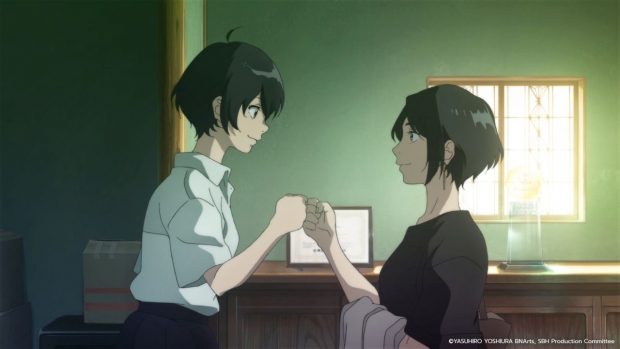
Shipman also believes music helps connect audiences on a deeper level to the characters – and their circumstances – in these stories. “It’s almost like it adds another layer of emotional depth to a character,” she says. “It’s like when you hear a Taylor Swift song. I’ve never broken up with Harry Styles before, but I sure feel like I know what that felt like because of her music.”
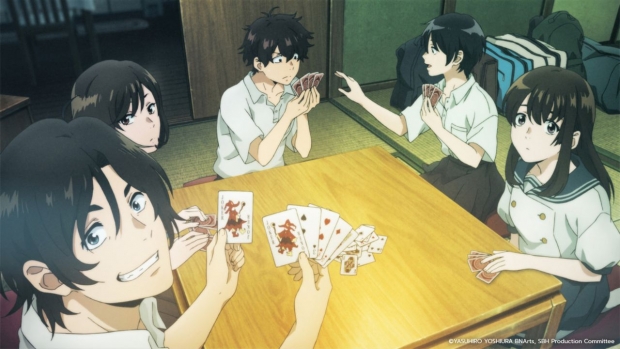
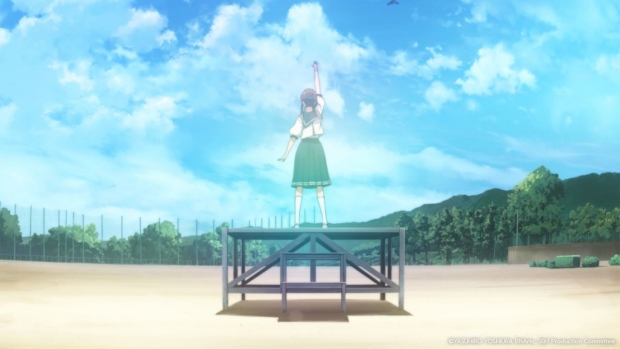
For decades, the film industry had an arranged, and highly successful, marriage between music and animation. This artistic partnership between two very different mediums of storytelling produced some of the most captivating scenes in American animation history – from a ballad of yearning for freedom belted by a troubled princess to a tearful tune from a misunderstood teen gorilla. Yet, for some reason, anime has been reluctant to jump on the musical bandwagon. That is, until recently.
The New York City Film and Television Festival award-winning film, written and directed by Patema Inverted’s Yasuhiro Yoshiura, releases in U.S. theaters Sunday, January 23.
Other than idol-focused anime or those directly focused on musicians like Carol and Tuesday, Her Blue Sky and Anonymous Noise, anime had very few music-centric films, with regular musical numbers performed spontaneously by its main cast. And while it’s not strictly a musical, Sing a Bit of Harmony is a unique feat in the anime industry that shows Japanese animation taking its first steps into a form of storytelling where what is sung is just as important as what is seen.
“And she has it down to a science,” adds Sinclair of Palencia’s song direction. “In this movie, the stakes for the sci-fi stuff are high, but the emotional stakes are higher. And drawing that out through these interpersonal relationships are as important, if not more, than anything else.”
Ian Sinclair, who voices the film’s “popular boy” character Gotchan, adds, “I remember being blown away as soon as I saw it. You can just tell the care that’s put into it. It makes you up your game. I’m getting goosebumps talking about it. And I look forward to seeing it in a big-screen format. With a huge sound system.”
“As artists, as creators, we have many different forms of art that we participate in,” says Mei. “And this is a combination of a lot of artistic talents that people can connect with. I would love for people to enjoy the story for the art that this movie is.”
Dash adds, “These are high school kids that we’re talking about. We’ve all been in high school, we’ve all kind of seen the world through those eyes. And the music kind of brings you back to the you of ten years ago.”
“Music transcends languages and so, especially with Sing a Bit of Harmony, you get a lot of music that’s connecting situations, mending relationships, bringing things together, pulling together all these unlikely situations and unlikely relationships that wouldn’t have happened if it weren’t for the music itself,” notes Mei. “I was so moved in certain scenes that, when I was recording, there are reactions you hear from Satomi that are genuine reactions from me in the booth. This animation with this music, it’s absolute gold.”
“One of the producers likes to joke that she pulled me out of retirement to do this movie,” says Brina Palencia, ADR song director for Sing a Bit of Harmony’s English dub. “She sent me the premise of it and the film to watch saying, ‘I really think this is your speed.’ And as soon as I saw it, I was like, ‘I’m going to have to do this.’”
Sing a Bit of Harmony certainly has a heartwarming premise, but it was its focus on music –composed by Ryō Takahashi and written by Youhei Matsui – as a form of primary communication that attracted not only Palencia and Shipman, but also Satomi’s English voice actor, Risa Mei.
And to Palencia, a feel-good, song-saturated story could not have come at a better time. “It’s such a lonely time, right now,” she says. “And I feel like, through all this music and all these songs, Shion is just trying to make people feel seen and make sure that they feel loved. And it was really important to me, in the adaptation, that continued to come across. It was the thing I probably worked the hardest on was to make sure that every word, in some way, could make people feel less alone. And I hope that when people watch this film, they feel seen, and they feel loved, and they feel happy.”
Megan Shipman, who voices and sings for Shion in the film’s English adaptation, adds, “It’s this unexpected cherry on top that really makes the movie a little more special because, through her songs, you see Shion understand what being happy means and also show others how easy it is to find happiness.”
In fact, Palencia used her own tears as a way to help adapt Matsui’s lyrics. “My barometer for if I had the right lyric was if it made me tear up,” she shares.
Sinclair agrees, noting, “Honestly, I think that we all needed a movie like this, that, in general, you can walk out having warm and fuzzy feelings and feel contented with a drive to go for the things that make us happy. I think a lot of people are going through that right now. They’re trying to find what makes them happy and to break out of their own programming as it were. If we can motivate just a few people to go toward what makes them happy, then we have done good in this world.”
In addition to its moving music, Sing a Bit of Harmony is filled with gorgeous animation produced by a team including illustrator and character designer Kanna Kii, and animation director Hidekazu Shimamura. There are downpour sequences where sunshine and rainbows break through the rainy clouds as Shion sings to a couple whose relationship is also a bit stormy; there are moments as well of incredible spectacle with fireworks, neon lights, and solar panels that are moved to create a perfect reflection of a stary sky as Shion and a group of high school friends rally under exploding colors to serenade Satomi.
Victoria Davis is a full-time, freelance journalist and part-time Otaku with an affinity for all things anime. She’s reported on numerous stories from activist news to entertainment. Find more about her work at victoriadavisdepiction.com.
Palencia believes the winning combination of music and animation stems from both mediums drawing on human emotion. And that while anime has always been a sector of storytelling that doesn’t hold back its tear factor, adding music, sung by an innocent, bright-eyed main character, sharpens the blade that cuts to a viewer’s emotional core. “Emotions are abstract, they’re not logical,” she explains. “So, to be able to watch something that hits you on both of those levels – on the music level and the animation level – I think that’s why it ends up being so much more moving. Together, they do dip into our subconscious in a way that other art forms just can’t.”
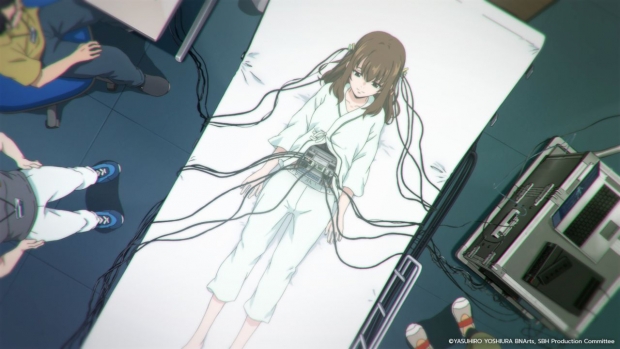
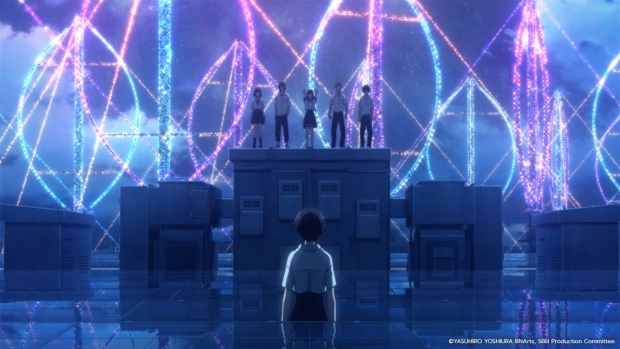
Sing a Bit of Harmony, produced by FUNimation Entertainment along with J.C. Staff studio and Bandai Namco Arts, follows an A.I.’s pursuit to make her human classmates happy through song. Shion, the A.I. doesn’t quite understand social cues and finds herself suddenly dropped into a high school as an experiment to test her intelligence and ability to fit in as a robot with humans. Expressing an unusual attachment to an outcast student named Satomi, Shion uses singing to not only help convey her own thoughts and feelings, but also to resolve conflict and bring more friends into Satomi’s life.
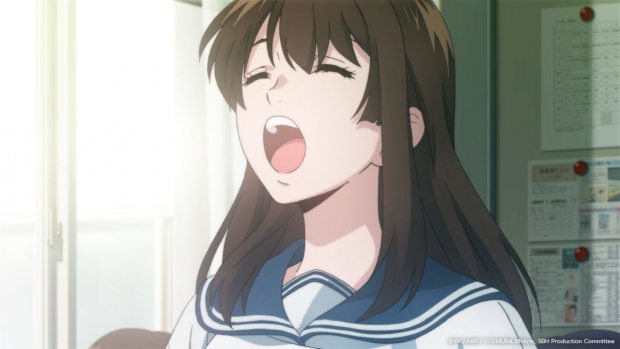
“Throughout the movie, there were certain moments where I was just in awe of the art, the colors, the music, and everything coming together,” says Jordan Dash, who voices Toma, Satomi’s long-time childhood friend. “I got a little bit distracted during recording. I’ll be honest. It was just so awe-inspiring and it’s honestly one of the highlights of my career.”

Despite its sci-fi origins, Sing a Bit of Harmony is a musically-charged slice-of-life, rooted in emotion and an everyday desire to find one’s own happiness and brought to life through the sights and sounds of many talented artists.
